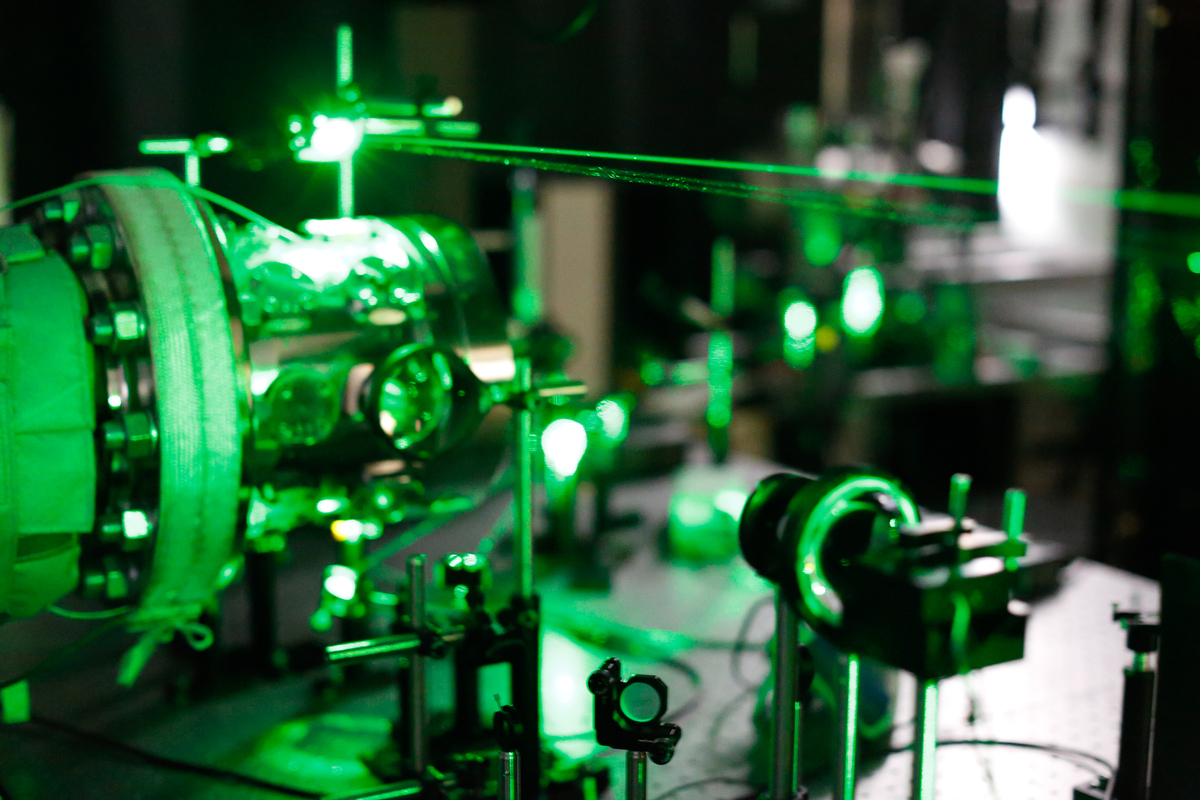When Aamir Farooq’s student Ana Slama approached him to say how much she was enjoying Javier Ruiz-Martinez’s class on catalysis, he thought she was trying to politely tell him that she wanted to switch supervisors.

However, in reality Slama was proposing to explore ways to unite the two professors’ quite distinct areas of chemical research. The outcome of this exploratory project – a novel method to produce enhanced catalyst materials – is already generating interest from industry research partners.
One aspect of Farooq’s research focuses on the use of shockwaves to study the gas phase chemistry of fuel combustion. “We use shockwaves much like a piston in an engine, compressing the fuel to high temperatures and pressures, which gives us ideal conditions for studying fuel chemistry,” Farooq says.
“What she wanted was to bring together the knowledge in my group with what she had learned in class.”
Originally from Brazil, Slama initially joined Farooq’s group as an intern. “She was studying the chemistry of methyl tetrahydrofuran, a biofuel, mostly on the simulation side,” he says. The project went well and Slama decided to return to KAUST as a master’s student. “She had done some really nice simulation work with this fuel, and when she came back, we planned to use the shock tube for the experimental work,” Farooq says.
Slama’s research plans changed course after that catalysis class. “I said, ‘I have no problem if you want to go work with Javier, you should do what you really want to do’,” Farooq says. “But what she wanted was to bring together the knowledge gained from working in my group with what she had learned in class.”
Catalysts and catalyst support materials are typically made in a furnace or by heating a chemical solution. Subjecting materials to shockwaves also causes them to heat up. “Slama suggested we use this effect to make materials for catalysis,” Farooq says. “That’s how it all started, and she then went and talked to Javier.”
“The idea was completely new to me, but it raised a lot of curiosity in me,” Ruiz-Martinez says. After initially exploring the general effect, the team began to focus in on the effects of shockwaves on titania, a common support material for catalysts such as platinum and palladium.
“So far, the preliminary data are promising,” Ruiz-Martinez says. The team showed that the main effect on titania is related to the pressure effect of the shockwave impact, rather than a heating effect. “We saw a reduction in the crystallite size of titania, which meant that the overall surface area of the material increased,” Farooq says. “As anybody working in catalysis knows, increased surface area always works in your favor.” The thermal stability of the material was also improved.
Slama’s part in the project was completed when she submitted her thesis, Farooq says. “But I have another student very much interested in continuing this work for his Ph.D. research,” he adds.
The KAUST research environment is an ideal incubator for such exploratory, cross-disciplinary work, Farooq says. “There is a willingness to talk and collaborate, and our baseline funding really allows us to try out these kinds of ideas,” he says. “Now that we have explored it and understand it, we are in a position to seek external funding with industrial partners.”
“As a small scientific community that works and lives together, it is easy to talk about science with your neighbors, your friends, your sport mates,” Ruiz-Martinez adds. “I would even say that it is practically impossible not to do cross-disciplinary projects in KAUST.”

